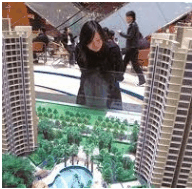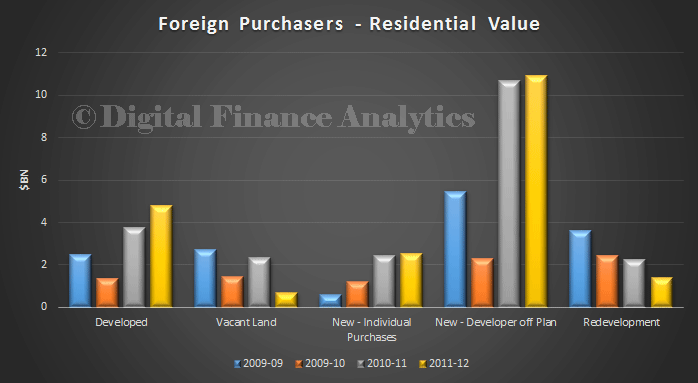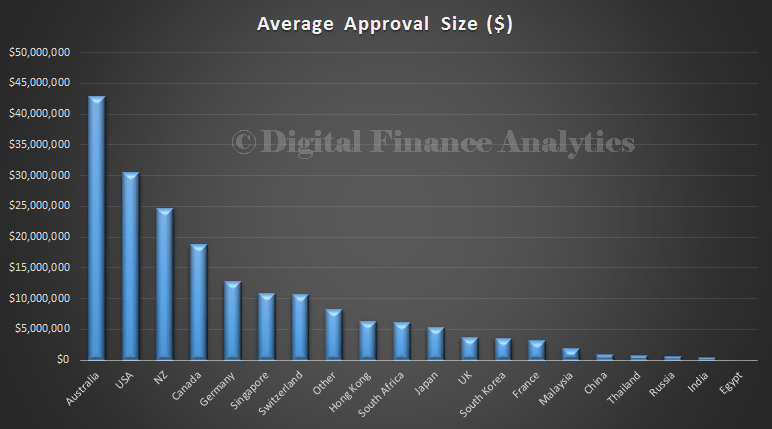
By Martin North. Cross Posted from Digital Finance Analytics Blog
One factor which is driving the residential property market, especially in the major centres of Sydney, Melbourne and Perth is a rise in overseas purchasers. They may be Australian residents, overseas purchasers buying property for investment through an approved development, or locals acting for overseas purchasers, who are attracted by the sustained house price growth and relative economic stability. China is often identified as a major source for potential purchasers.
Foreign Residential Property Investment is subject to the regulations as stipulated by the Foreign Investment Review Board (FIRB). The overarching principal is that foreign investment in residential real estate should increase Australia’s housing stock and all applications are considered in light of this. To quote them:
Residential real estate means all land and housing that is not commercial property or rural land. In that regard, ‘hobby farms’ and ‘rural residential’ blocks are residential real estate.
Temporary residents need to apply if they wish to buy an established dwelling. Only one established dwelling may be purchased by a temporary resident and it must be used as their residence in Australia. Such proposals are normally approved subject to conditions (such as, that the temporary resident sells the property when it ceases to be their residence). Temporary residents cannot buy established dwellings as investment properties, but can buy established dwellings for redevelopment. Temporary residents need to apply to buy new dwellings in Australia. Such proposals are normally approved without conditions. Temporary residents need to apply to buy vacant land for residential development. These are normally approved subject to conditions (such as, that construction begins within 24 months).Foreign persons that operate a substantial Australian business need to apply to buy established dwellings to house their Australian based staff. Such proposals are normally approved subject to conditions (such as, that the foreign person sell the property if it is expected to remain vacant for Six months or more).
Non-resident foreign persons need to apply to buy established dwellings for redevelopment (that is, to demolish the existing dwelling and build new dwellings). Proposals for redevelopment are normally approved as long as the redevelopment increases Australia’s housing stock (at least two dwellings built for the one demolished) or where it can be shown that the existing dwelling is derelict or uninhabitable. Approvals are usually subject to conditions. Non-resident foreign persons need to apply to buy new dwellings in Australia. Such proposals are normally approved without conditions. Non-resident foreign persons need to apply to buy vacant land for residential development. These are normally approved subject to conditions (such as, that construction begins within 24 months)
Residential Real Estate was freed up in 2009, although in 2010 changes were made to remove an earlier exemption that currently applies to temporary residents buying residential real estate in Australia. This ensures that temporary residents need to notify the Treasurer before buying residential real estate in Australia. Short-term visitors such as tourists, business people and those here for a medical procedure are not temporary residents.
But overseas students studying in Australia may purchase. In addition, foreigners may apply to redevelop a second hand dwelling. Development must increase the number of dwellings and no rental income can be obtained from the existing dwelling prior to demolition. Such redevelopments are required to demolish the existing dwelling and commence construction of the new dwellings within 24 months in line with vacant land.
Under existing laws, developers are able to sell 100% of their developments to non-residents.
According to the FIRB Annual Report 2011-12 overall Residential Property Investment by overseas parties grew from $14.92bn in 2008 to $19.70bn in 2012, with $10.92bn from 70 Developer off the plan projects, (235, $5.48 in 2008). This shows a significant rise in custom development targeted at overseas markets. Portals like Investorist offer the opportunity for overseas investors to view property projects for sale in Australia.

Some argue that this is going to become a significant force driving the market higher, and it will continue to displace local first time buyers, given the sheer numbers of for example Chinese buyers who face Chinese Government restrictions at home and significant savings. Bear in mind the size of the Chinese population, as one indication each year 7 million students graduate from Chinese universities with degrees!
One factor to watch is the exchange rate, Here is the 2 year view from dollars.com. As the AU dollar falls against the Chinese Yuan, the purchasing power of investors from China will improve.
 There is no good data source for the number of overseas purchasers buying property, other than the 2012 FIRB data. Interestingly, China registers as the highest number of FIRB approvals (though FIRB does not adequately separate out different types of investment), so this may be deceptive.
There is no good data source for the number of overseas purchasers buying property, other than the 2012 FIRB data. Interestingly, China registers as the highest number of FIRB approvals (though FIRB does not adequately separate out different types of investment), so this may be deceptive.
The average transaction from China is in the order of $800k, which looks more like the price of a house/unit to me. The Australian approvals are most likely to be the construction on approved residential tower blocks, like we see being built at Hurstville, or Wolli Creek in Sydney.

So far as I can see, good data is not captured at the point of purchase. Even if it were, it would be complex. To illustrate this, we looked back over our surveys and identified the following scenarios:
- Australian residents from overseas buying units off plan in a number of city suburbs, across Sydney, Melbourne, Brisbane and Perth for own occupation and investment. Many of these will be pre-approved by the developer with FIRB.
- Australian citizens buying property in their own names, using money from family or friends overseas, for investment. No FIRB approval needed.
- Overseas investors purchasing via an Australian company structure. Many need FIRB approval.
- High-Rollers from overseas purchasing up-market property for residential use. Many need FIRB approval.
- Overseas companies buying Australian land and existing property for development. FIRB approval required.
We also see the reverse by the way:
- Australians buying property overseas, in markets including Spain, Italy, UK, for investment
We are essentially becoming part of a more globalised property market and it is unlikely this will change. Given what we know about the state of the market, and that locals are being priced out by other purchasers, including investors and overseas purchasers, we need to be wary of these current trends – so I think the Chinese Factor is a critical issue. With limited supply, continued overseas investment in our market will drive prices higher, that is, until conditions change. If China caught an economic cold, it is possible we would see a reversal in property fortunes in Australia, so we are probably more leveraged to China through property than we know or realise.
I would advocate capturing more comprehensive data so we can at least get a handle on overseas property investments. I do not think we are able to stop globalisation, but we need to understand the implications a whole lot better.


